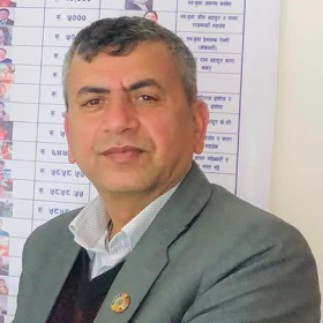Miscellaneous
Closing the gap
National strategies & programmes should focus on adolescents & youth to improve their access to sexual & reproductive health services.
Jhabindra Bhandari
The impacts of HIV and Aids on individuals, families and communities are devastating. Since most adolescents and young people are at high risk of HIV, the epidemic jeopardizes household economy and puts vast majority of children, adolescents and young people in a more vulnerable situation. Their access to education, health and economic opportunities is severely constrained. The vicious cycle of poverty and HIV is more densely visible, and its lasting impacts on children, women and men are unfortunately serious.
Over the decades, we have witnessed deaths of millions of people due to HIV and Aids worldwide. Indeed, this is a huge social tragedy which undermines humanity at large. This is increasingly becoming a strong challenge to reach the goals of sustainable development.
Global estimates reveal that 35 million people were living with HIV in the world at the end of 2013. Good news is that new HIV infections among children have fallen by 58
percent since 2001. However, according to UNAIDS report, 19 million of the 35 million people living with HIV today do not know that they have the virus. Therefore, major challenge is to close the gap between people who have access to HIV prevention, treatment, care and support services.
In Nepal, the recent estimated adult HIV prevalence is 0.28 percent which is considered low compared to other countries in South Asia. The key affected populations which contribute to a large share of HIV burden include female sex
workers, transgender sex workers, men who have sex with men, injecting drug users, migrants and mobile populations.
Despite several interventions, the progress in terms of reducing the incidence of HIV among the high risk populations is still minimal. Besides the government sector, the investments on HIV and Aids from Global Fund, development partners, civil society, private sector and media are also contributing to reduce the burden of HIV in the country. In this context, the Global Fund has been instrumental in enhancing the national capacity to respond HIV and Aids. More significantly, this has greatly helped to address the emerging needs of prevention, treatment and care services of people living with HIV and Aids.
Clearly, the challenge of securing external funding for a long-term is not possible as priorities of donor agencies change over times. Therefore, there are some practical issues related to national HIV response. In this respect, national HIV and Aids programme has heavily relied on external funding. If such funding stops, it will have tremendous impacts on the continuity of existing services. Additionally, there are system issues which are most often debated, but always remain as an unfinished agenda. Due to lack of an effective coordination among partners, there are evidences of duplication of services at all levels. Moreover, there is a need to examine the cost-effectiveness and quality of HIV interventions. In our context, ensuring easy access to antiretroviral therapy is very challenging because our health system in remote districts is still weak. Sadly, many people living with HIV and Aids in Nepal still do not have access to antiretroviral therapy. Based on the guiding principles of HIV and Aids policy, Nepal has formulated national HIV and Aids strategy (2011-2016) and investment plan (2014-2016) to provide guidance for all stakeholders to prioritise HIV prevention interventions. Effective implementation of such policies and plans is always a matter of concern because of limited national capacity. The lingering effects are somewhat frustrating. A systematic review of such policies and strategies is crucial to identify existing bottlenecks and generate new evidences for corrective actions.
Considering new priorities for more investments, national strategies and programmes should sufficiently focus on adolescents and youth to improve their access to and utilisation of sexual and reproductive health services.
Another worrying part is that people living with HIV are often left behind and socially discriminated in most societies. Due to stigma, prohibitive laws and policies, they have limited access to education, health care, employment, and social protection services. Although networks of people living with HIV and Aids are actively united to voice their concerns and rights, a supportive environment is extremely important to ensure their meaningful involvement in all aspects of HIV response.
To sum up, multi-sector response is key to fight the epidemic. Mainstreaming Aids into development policies and strategies can greatly contribute to reduce the burden of HIV in a more effective and sustained manner. National Planning Commission has developed guidelines to facilitate the process of mainstreaming HIV and Aids into different sectors. Due to lack of shared understanding, commitment and alignment in budgeting process, the mainstreaming process into sectors has been very slow.
Indeed, Aids is a development challenge. Ending the Aids epidemic is hopefully possible. Because global evidence reveals that new HIV infections are gradually declining. We should ensure that our concerted efforts respond to needs of the high risk populations in terms of their access to prevention, treatment and care services. Our collective commitments and actions will help halt and reverse the spread of HIV globally.
(Bhandari is with Nutrition and Food Security Secretariat at the National Planning Commission)




 14.12°C Kathmandu
14.12°C Kathmandu










